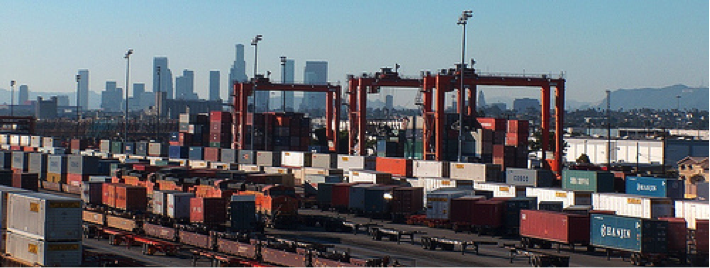In a cross-cutting collaboration with USC’s Department of Preventive Medicine, SSI researchers mapped the demographics of communities subjected to high cancer risk around rail yards in California. Those communities exposed to such risk, defined as a 100-in–a-million cancer risk from the air pollution, were made up of significantly poorer residents than the counties in which the rail yard was sited, and had a significantly greater proportion of Latino residents than their counties as a whole. The results were published in the open-sourceInternational Journal of Environmental Research and Public Health.
Dr. John Wilson and Maryam Taher of SSI, working with Professor Andrea Hricko and other USC public health experts from the Southern California Environmental Health Sciences Center and a community representative, used existing cancer risk maps developed by the California Air Resources Board and census data to calculate the demographic profiles of those affected by the large diesel emissions produced by California rail yards. They also analyzed the demographics around some rail yards recently proposed for expansion and found that the patterns were the same. Finally, they illustrated the global trend of construction of intermodal cargo facilities near poor communities.
The research group proposed solutions to this ongoing issue of environmental injustice, including siting of rail transfer yards on-dock to transfer goods directly from ocean-going cargo vessels, establishment of minimum setbacks between rail yards and residential communities, more comprehensive environmental impact assessments, and further research on the health outcomes in communities next to rail facilities.
The article is available free of charge at: http://www.mdpi.com/1660-4601/11/2/1914.




